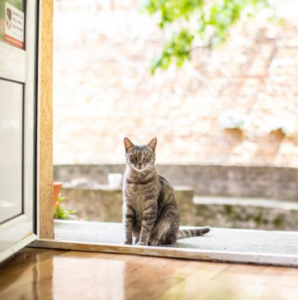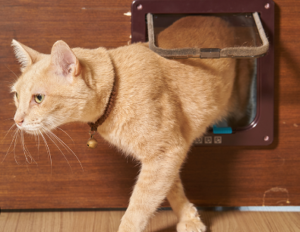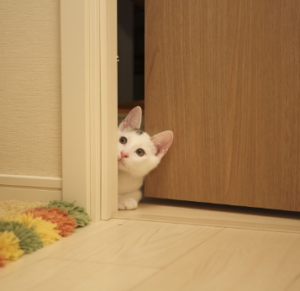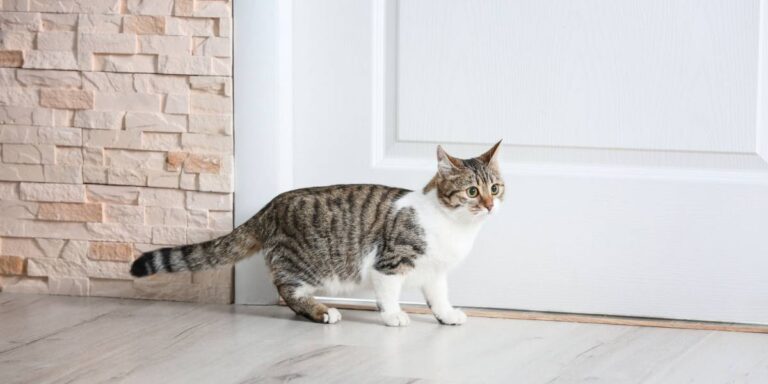Are you trying to keep your curious kitty out of a room for their safety, or perhaps to maintain your privacy? Fret not, as there are several effective methods to prevent cats from entering specific areas of your home. Cats are known for their agility and persistence, but with the right approach, you can ensure certain spaces remain feline-free.
Understanding your cat’s behavior is key to managing their movements. Why do they want to go into that room in the first place? Is it because of the comfort of a sunny spot on the carpet, or the allure of a forbidden area? By addressing these questions, you can tailor a solution that respects your pet’s instincts while maintaining the boundaries you’ve set. Let’s explore some surprisingly explosive strategies to keep your cat out of off-limit zones without losing the uniqueness of your approach or the context of your cat’s needs.
Understanding Cat Behavior

Let’s dive into their world for a moment. Cats love high vantage points; it’s part of their predatory makeup. They prefer to survey their kingdom from above. Distractions like cat trees or shelves can fulfill this need elsewhere, so they’re less inclined to breach your ‘no-go’ zones. Moreover, cats dislike certain textures and smells. Double-sided tape or aluminum foil can be unpleasant for their paws, while citrus scents tend to keep them at bay. By integrating these elements into your strategy, you’re leveraging their instincts to your advantage—it’s like a little psychology for your cat!
Physical Barriers and Deterrents

Another effective strategy is using furniture placement to block access. Have you ever noticed how your cat avoids squeezing through tight spaces if there’s no clear escape route? By rearranging furniture, you can create a physical barrier that’s subtle yet effective. Additionally, deterrent mats with textures cats find unpleasant can be placed in front of doorways, dissuading them from crossing over. Let’s not forget the power of double-sided tape or aluminum foil; cats generally dislike the feeling of sticky surfaces and the sound of foil under their paws.
Here’s a quick list of deterrents you might consider:
- Doors: The simplest solution, just keep them closed.
- Pet/Baby Gates: Great for keeping spaces open to humans but not to cats.
- Furniture: Use strategically placed furniture to block off areas.
- Deterrent Mats: Mats with textures cats avoid can be very handy.
- Sticky Tape/Foil: Cats dislike the feel and sound, making these great for placing around entry points.
Training Techniques to Discourage Entry

First things first, positive reinforcement is key. Cats respond well to rewards, so whenever they obey your command or stay away from the no-go zone, shower them with treats or affection. But what about when you’re not around? Here’s a trick: set up a booby trap. Not the scary kind, but a harmless one that’ll startle them just enough to make them think twice next time. Think aluminum foil on the counter or a motion-activated can of compressed air. It’s all about making those areas less appealing.
Now, let’s talk consistency. You’ve got to be the master of repetition. Use a firm “no” every time kitty approaches the threshold, and gently guide them away. Eventually, they’ll connect the dots. And remember, never resort to shouting or physical punishment—cats are sensitive souls, and we want them to respect the rules, not fear them. Ready to put these tips into action? Your cat’s curiosity won’t stand a chance!
Environmental Enrichment as a Distraction
Ever noticed how a cat’s curiosity seems to have no bounds? That trait can lead our feline friends into areas we’d rather they avoid. But what if we could channel that curiosity into something more productive? That’s where environmental enrichment comes into play. It’s all about creating a space so engaging that those off-limits rooms lose their allure.
Think of environmental enrichment as a magic show—a spectacle that captivates your cat’s attention. You can start with something as simple as a new scratching post or a window perch. But why stop there? Consider setting up a puzzle feeder that challenges them or even a cat tree that offers a vertical adventure. The goal is to create an area that’s a firework of experiences for your cat, keeping their minds and bodies active, and away from places they shouldn’t be.
- A variety of toys that stimulate hunting instincts
- Regularly rotated items to maintain novelty
- Safe outdoor access, like a catio, to explore
Remember, the key to success with environmental enrichment is consistency and variety. By consistently updating your cat’s play area, you’ll keep their environment fresh and exciting. This not only prevents boredom but also reduces the likelihood of them seeking out those forbidden rooms. It’s a win-win: your cat stays entertained and safe, and you maintain your peace of mind. Now, isn’t that a surprise worth exploring?
